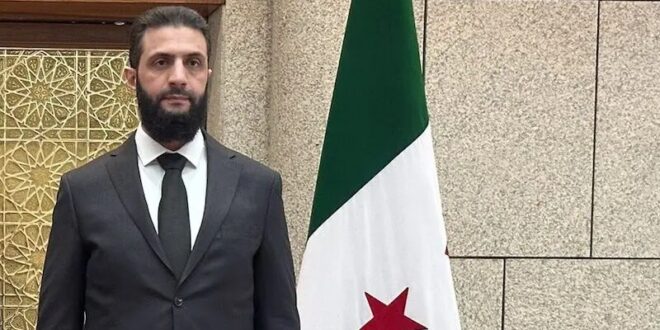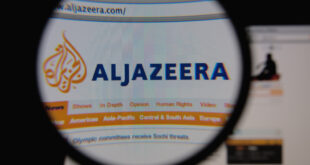The unexpected fall of Bashar al-Assad’s regime on December 8 has put Syria in the spotlight once again. Following over a decade of conflict, the killing of hundreds of thousands of Syrians, the displacement of around half of the country’s population internally or externally, there is a new reality in Syria. While the aftermath of Assad’s fall has gone generally better than expected, the transitional period ahead is one that requires an alert and proactive US approach, rather than a disengaged and passive one.
The future of Syria hinges on a number of interconnected dynamics: the evolving role of Hay’at Tahrir al-Sham (HTS) under Ahmed al-Sharaa (aka Abu Mohammad al-Jolani), the trajectory of the tensions between Turkey and the Kurdish-led Syrian Democratic Forces (SDF), the Islamic State (ISIS)’s resurgence and potency, regional dynamics and intervention, and the US role in the shaping the country, particularly through sustained military presence. This article explores each of these dynamics, how they could reconstitute the emergent reality in Syria, and offers recommendations on how the United States should deal with the post-Assad Syria.
Hay’at Tahrir al-Sham: Leading the New Syria
HTS, or the Organization for the Liberation of the Levant, led the coalition that toppled Assad’s regime on December 8 in a campaign marked by minimal bloodshed or retribution against loyalists. HTS originated in 2017 from a coalition of hardline Islamist groups, many with jihadi backgrounds. Its predecessor, Jabhat al-Nusra, was al-Qaeda’s official franchise in Syria, created by the Islamic State of Iraq (a precursor to ISIS) before their split. HTS leader Sharaa was arrested in Iraq during the mid-2000s for planting a bomb while part of al-Qaeda.
Over the years, HTS has undergone ideological shifts, evolving from a group in the transnational jihadi orbit into a Syrian-focused revolutionary entity. Following its campaign against Assad, HTS has displayed surprising tolerance toward non-Muslim and non-Sunni groups, including Christians, Druze, and Alawites. The HTS-led interim government has appointed Mohsina al-Mahithawi, a Druze woman, as governor of the southern Druze-majority Suwaida province. Additionally, HTS has permitted unveiled women in public, let bars in major cities like Damascus function, and allowed New Year celebrations. These gestures of inclusivity have earned the group cautious praise from various quarters inside and outside Syria.
However, as recent remarks by Sheikh Hikmat Hajari, the spiritual leader of the Druze community, reveal, there is deep distrust of HTS among the country’s minorities that could threaten the emergence of a unifying central authority in the country. The group’s actions and governance practices have generated concern. For instance, reports of an Alawite shrine being burned by opposition fighters during the recent anti-Assad campaign in Aleppo caused unrest in the Alawite-majority coastal regions. The Ministry of Education’s proposals to amend school curricula to reflect Islamist views have also drawn criticism. Compounding these issues is recently leaked footage of Justice Minister Shadi al-Waisi overseeing a public execution of two women in Idlib in 2015 on charges of prostitution.
There is also Sharaa’s self-appointment as the de facto leader of Syria. In a recent interview with Al-Arabiya, Sharaa revealed plans for a four-year timeline to hold presidential elections and two to three years to draft a constitution, outright rejecting federalism. His vision points to a presidential system likely dominated by Sharaa himself. The unilateral formation of a twelve-member interim cabinet, drawn from HTS loyalists, further highlights the group’s concentration of power. HTS is also overseeing the restructuring of the Syrian army, cementing its unilateral control under the current chaotic circumstances.
Moreover, HTS’s past suppression of activists and opposition figures, alongside its monopoly of power in Idlib’s Salvation Government do not bode well. The group’s inclusion of foreign jihadi fighters—mainly from Europe and Central Asia—deepens skepticism about its intentions. Several were appointed to senior military roles in late December. Moreover, remarks by Ayisha al-Dibs, Sharaa’s appointee for women’s affairs, stressing Sharia as the basis of governance and rejecting secular models, have heightened fears of an Islamist agenda. When considered as a whole, these actions and statements reveal ideological contradictions that generate legitimate fears of authoritarianism and extremist rule, warranting close scrutiny of HTS and its interim government. The critical question for many is whether the current relative tolerance is a sign of genuine ideological transformation or a tactical maneuver to consolidate power before imposing stricter Islamist governance.
The Future of Northeast Syria and Tensions with Turkey
A key factor shaping Syria’s future is the ongoing military confrontations between the Turkish-backed Syrian National Army (SNA) and the US-supported SDF. Since late November, the SNA has captured several towns in northern Aleppo province from the SDF. The United States, which considers the SDF a crucial partner in its efforts to combat ISIS, has brokered ceasefires between the two sides, but intermittent clashes continue in key areas such as Kobani and Manbij in northern Aleppo province.
Northeast Syria, under SDF control, remains strategically critical due to its energy and agricultural resources and its role as a site housing around 9,000 ISIS prisoners and tens of thousands of ISIS family members, many of whom remain radicalized. SDF Commander Mazloum Abdi has said IS had planned a prison break, seeking to exploit SDF’s fighting with the SNA. The region also hosts most US forces in Syria, alongside the Tanf Base near the Jordanian border.
The SDF and other Kurdish groups in Northeast Syria/Rojava have called for decentralization. While Sharaa has pledged “no more injustice… on our Kurdish people,” he has rejected the federalization of Syria. Keen to assuage Damascus’s concerns and accusations of separatism, Abdi has expressed willingness to allow Damascus control over border crossings and has opposed Syria’s division. These resources are essential for Syria’s recovery, which also serve as the SDF’s primary leverage against the new government. In an effort to directly address issues of mutual interest, Abdi met Sharaa in what was described as a “positive” meeting under US sponsorship.
However, mutual distrust between Kurds and Damascus runs deep, leaving the prospect of an agreement uncertain. Stability in Northeast Syria will depend on how these tensions and power dynamics evolve, alongside the continued fight against ISIS. Under the Assad regime, Kurds were subjected to systematic state discrimination, with tens of thousands deprived of Syrian citizenship. Having experienced unprecedented freedoms and control over their affairs since 2012, Kurds are unlikely to relinquish their gains. Without guarantees for some form of local autonomy in administrative and security affairs and respect for their secular liberties, the SDF and broader Kurdish population are unlikely to disband armed forces or strike agreements with Damascus.
The Islamic State in the New Syria
ISIS remains a potent threat in Syria, reportedly carrying out around 700 attacks in 2024—three times the number recorded in 2023—and resulting in over 750 fatalities. Operating primarily in the vast Syrian desert spanning Homs, Raqqa, and Deir ez-Zor provinces, its reach occasionally extends to Hasakah.
Having evolved over nearly two decades from its origins as al-Qaeda in Iraq in the mid-2000s, ISIS has shown strategic patience and the ability to exploit emerging opportunities. The reported arrest by the HTS administration of several ISIS militants planning to bomb the Shia holy shrine of Sayyida Zainab in Damascus suggests that the group is reverting to its well-rehearsed strategy of inciting sectarian strife, as it did in Iraq during the early years following the US invasion.
While HTS currently maintains ideological and political animosity toward both ISIS and al-Qaeda—having clashed with both in its current and previous iterations—any assessment of ISIS in a future HTS-dominated Syria must consider the nuances of Syria’s shifting dynamics and the composition of HTS itself.
Syria’s transitional period, marked by weak central authority, fragmented power, and limited military capabilities outside the US-SDF partnership, provides ISIS with opportunities to regroup and expand. Moreover, if HTS continues its trend toward relative moderation—such as tolerating unveiled women, alcohol sales, and participation in a Western-style political process involving elections and some degree of popular sovereignty—hardline elements within HTS, particularly foreign jihadis, could break away, defect to, or cooperate with ISIS or al-Qaeda.
These fluid and rapidly shifting circumstances demand vigilance from the United States and its allies. A resurgent ISIS capable of destabilizing Syria and threatening neighboring countries would undermine US and regional interests. The recent attack in New Orleans highlights ISIS’s enduring ability to inspire transnational violence. Enhanced coordination with the SDF, the interim government in Damascus, and regional partners will be critical to countering ISIS and ensuring long-term stability in the region.
The Regional Dimension and its Effect on Syria’s Future
The Syrian conflict’s regional dimension is deeply complex, with competing actors vying for influence. Among them, Turkey emerges as the main beneficiary of Assad’s fall. Its steadfast support for anti-Assad opposition groups over thirteen years has earned Ankara the trust of these factions and Syria’s Sunni Arab population, the bastion of anti-Assad activism. Economically, Turkish businesses stand to secure major reconstruction contracts in Syria due to their experience and proximity. Diplomatically, Syria is likely to be a Turkish client state for years. The possibility of a continued Turkish military presence in Syria cannot be ruled out.
However, Turkey’s regional ambitions come with significant baggage. Since 2015, Erdogan’s militaristic policies and sponsorship of Islamist groups, often in tandem with Qatar, have caused tensions across the region. Israel, despite benefiting from the weakening of the Iran-led axis, is deeply wary of Turkey’s rise and its ties to Sunni Islamist groups in Syria, some with jihadi backgrounds. Reports of Hamas leadership relocating to Turkey further heighten Israeli concerns. Additionally, Israel’s military expansion in Syria, beyond the areas of the Golan Heights it has controlled since 1967, is likely to fuel tensions with the new Syrian authorities and, by extension, Turkey, which by virtue of its new relationship with Damascus may feel pressured to respond in some way to the increased Israeli presence. A report by an Israeli government committee has warned that a military confrontation between Turkey and Israel might be on the horizon.
The Gulf states and Jordan are also rushing to respond to the aftermath of Assad’s fall. They have initiated a diplomatic campaign to support and shape the new Syria. Saudi Arabia and the United Arab Emirates, which in recent years had mended ties with Assad after years of strained relations and support for his opposition, view Turkey’s triumphalism over Syria, its neo-Ottoman ambitions, and the rise of Islamist groups in Syria with alarm—just as Jordan does. As Turkey lacks the financial means to fund Syria’s reconstruction, the Gulf states, with their immense financial resources, are positioning themselves as key players. The United Arab Emirates and Jordan are also reportedly cultivating influence by backing former revolutionaries in southern Syria, giving them an important role in shaping Syria’s future. Abu Dhabi is likely to have additional motivation to pursue this, given its broader regional proxy conflict with Ankara in Libya and Sudan. Reintegrating the new Syria into the Arab League will be another key leverage of the Gulf and their allies such as Jordan and Egypt.
Qatar is poised to play an important role in Syria’s future as well, by virtue of its close relationship with both Turkey and sections of the former Syrian opposition. Doha has already pledged to fund the new government’s increase of salaries and has provided several rounds of humanitarian assistance to Syria. The Qatari state’s Al Jazeera Arabic is also playing a major role in shoring up support for the new authorities among the Arab public. Qatar and Turkey’s policies and roles in Syria has pushed the United Arab Emirates and Saudi Arabia to reduce the new government’s reliance on their regional rivals, hosting the new Syrian Foreign Minister Asaad al-Sheibani.
Iran, by contrast, is the biggest loser in Syria. With Assad gone, Tehran has lost a critical link in its regional axis and its direct connection to Hezbollah. Iranian officials are grappling with this loss, oscillating between grief, blame, and denial. A senior Islamic Revolutionary Guard Corps commander, General Behrouz Esbati, recently admitted Iran’s “very bad defeat” in Syria and accused Russia of betrayal. Iranian analysts close to the regime have urged Tehran to pivot toward supporting the SDF against Turkey. The presence of SDF-aligned Sinjar Protection Units within Iraq’s Popular Mobilization Forces (PMF) near the Syria-Iraq border could serve as a conduit for Iranian influence regarding Syria. While the SDF has not leaned on Iran thus far, escalating Turkish-backed attacks may force it to do so, especially if Washington fails to restrain Turkey. In what might be a surprising alignment, even Israel might extend a helping hand to SDF forces if they are abandoned by the United States, given Israel’s concerns over Turkey’s role in a new Syria and the dominance of Sunni Islamists there.
Iran’s considerable influence in Iraq, through pro-Iran PMF factions and their presence along Iraq’s 600km border with Syria, provides Tehran room to maneuver in Syria despite recent setbacks. The defeat of SDF and Northeast Syria’s fall will increase the contact line between Iraq and Turkey-backed Sunni militants in Syria—a potentially dangerous development for both Iraq and Iran, especially given the presence of individuals with former jihadi inclinations within the ranks of these groups. Additionally, if Alawites feel marginalized in the new Syria, Iran might find ways to support an internal insurgency in coastal areas against Damascus given its long-standing connections to the community.
Redefining the US Role in Syria
Upon Assad’s fall, the United States dispatched the State Department’s top Middle East official, Barbara Leaf, to meet with Sharaa and removed the $10 million bounty on his head from his time as an al-Qaeda operative. This move signaled Washington’s intent to establish direct communication with Syria’s new rulers and potentially influence the country’s trajectory.
Syria’s story has evolved in unpredictable ways since 2011. While the United States initially supported opposition forces against Assad, this assistance ended as those groups failed to counter Assad’s regime and extremist forces like al-Nusra (HTS’s predecessor) and ISIS. The United States directly intervened in 2014, deploying troops and supporting Kurds to defeat ISIS. Up until Assad’s fall, US presence also aimed to limit the Iran-led and Russia-backed camp’s influence in Syria and the broader region.
With the Iranian and Russian challenges now largely absent in Syria, other strategic considerations persist. These factors justify continued US troop presence and diplomatic engagement. Seizing on the emerging opportunity, US policymakers in Washington may adopt a proactive role in shaping Syria’s transitional political process in order to align the new reality in Syria with broader US ambitions for a pro-US regional order. This requires Washington to maintain its 2,000-strong troops in Syria to ensure a strong presence and hand capable of shaping the country’s future.
Besides its military presence in Syria, the United States wields significant leverage over the current authorities that allows it to play a crucial role in shaping the country’s future trajectory. Washington’s recent provision of sanctions waivers for Syria on transactions related to the sale of energy and humanitarian supplies, and personal foreign remittances act as a positive gesture of good will and prudent policy. There is a multilayered multi-type US-imposed sanctions regime—from executive orders, to legislative acts, financial and economic sanctions, sanctions on individuals—in addition to various forms of terror-related designations on the Syrian state (dating back to the late 1970s) and former opposition groups currently in power in Damascus, including the HTS. On top of these, there are also sanctions imposed on Syria by European powers. The Syrian people deserve to live in normal conditions after decades of suffering under the Assad dictatorship and a brutal civil war. Washington and Europe’s approach appears to involve a phased removal of sanctions, contingent upon and aimed at encouraging positive behavior by the new authorities. Indeed, the United States and its allies should strategically, and in a spirit of good faith, leverage the removal of sanctions to facilitate a transition toward a pluralistic political system committed to: free elections and the peaceful transfer of power, proportional representation for all communities, decentralized governance to align with local cultural particularities in minority regions, upholding religious freedom, and other measures to prevent Syria from becoming a base for renewed jihadist activity or a threat to neighboring countries.
On the issue of maintaining sanctions and terrorism designations against HTS, US and European powers should coordinate their moves. Syria will require anywhere between $250 to $400 billion to rebuild its shattered infrastructure and economy, relying on large-scale foreign aid and investment to achieve this. The United States, European Union, and Gulf Arab states are well-positioned to lead this effort and should use their leverage to guide Syria’s reconstruction and governance in the right direction. Allowing Ankara to dominate the new Syria’s course could provoke regional pushback and derail Syria’s chances of recovery as well.
The SDF-Turkey relationship remains a significant challenge for US policy in Syria, given Washington’s partnership with the SDF in northeast Syria. Turkey views the SDF as an extension of the Kurdish movement in Turkey, complicating relations. The United States should encourage ongoing talks between the Turkish government and Abdullah Ocalan, the imprisoned leader of the Kurdistan Workers’ Party. Improved relations between Turkey and Kurdish groups within its borders could pave the way for a peaceful relationship between Ankara and the SDF, reminiscent of the 2012 to 2015 period. As this author has argued elsewhere, establishing a mutually beneficial relationship between Turkey and Syrian Kurds is possible and should be a priority for US diplomacy. The first step, however, is to halt Turkish-backed attacks on Kurdish areas, as these attacks risk creating chaos and instability that could spiral out of control and invite intervention from other regional actors, particularly Iran and Iraqi groups.
 Eurasia Press & News
Eurasia Press & News


